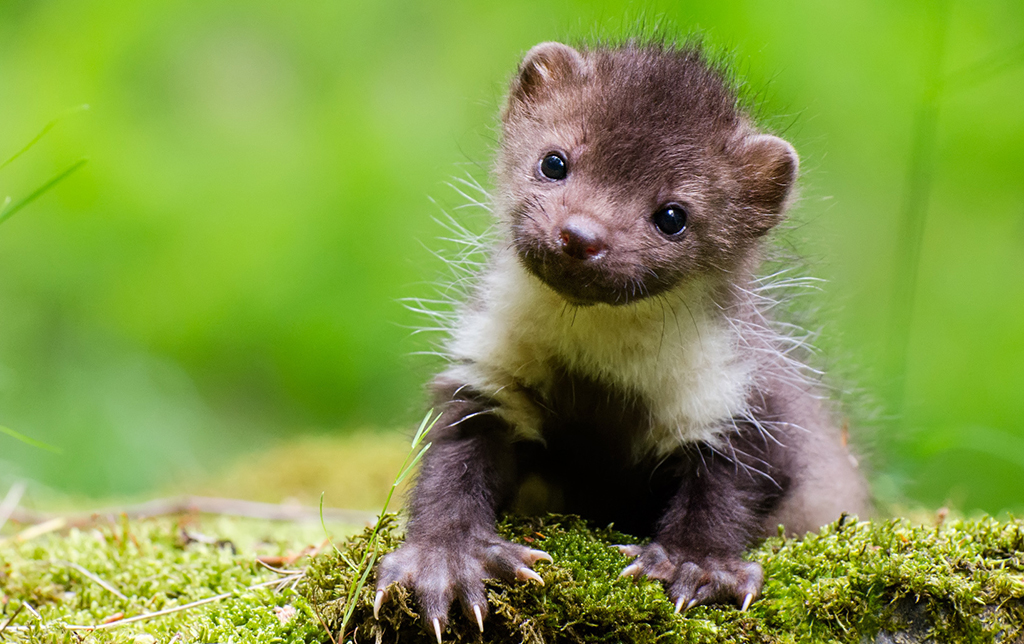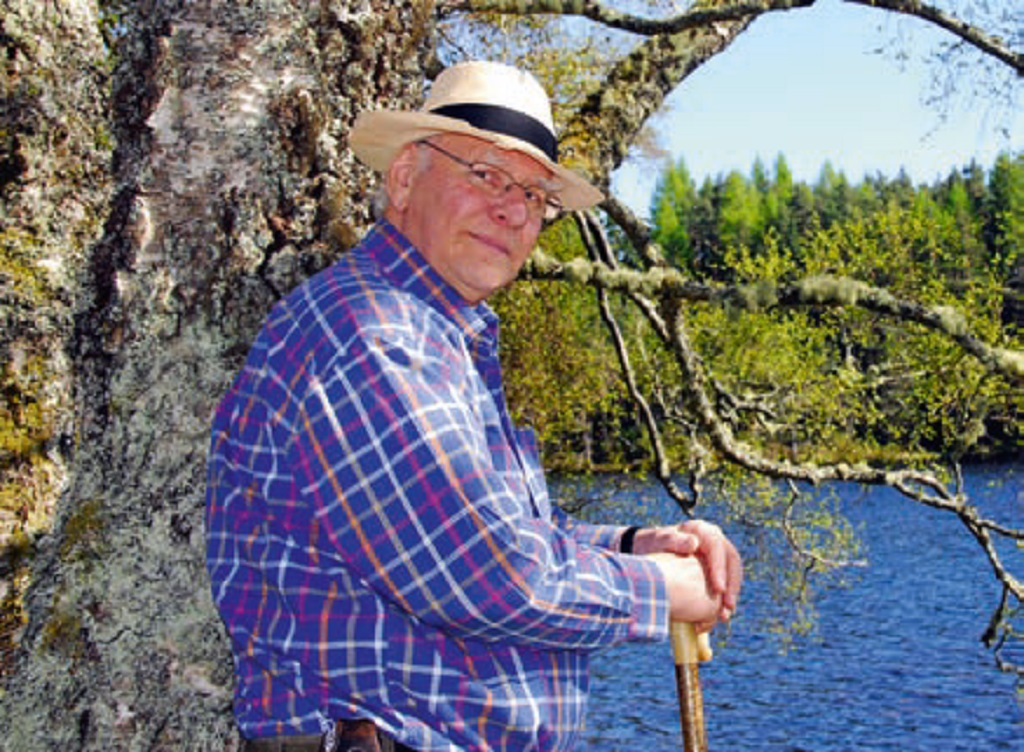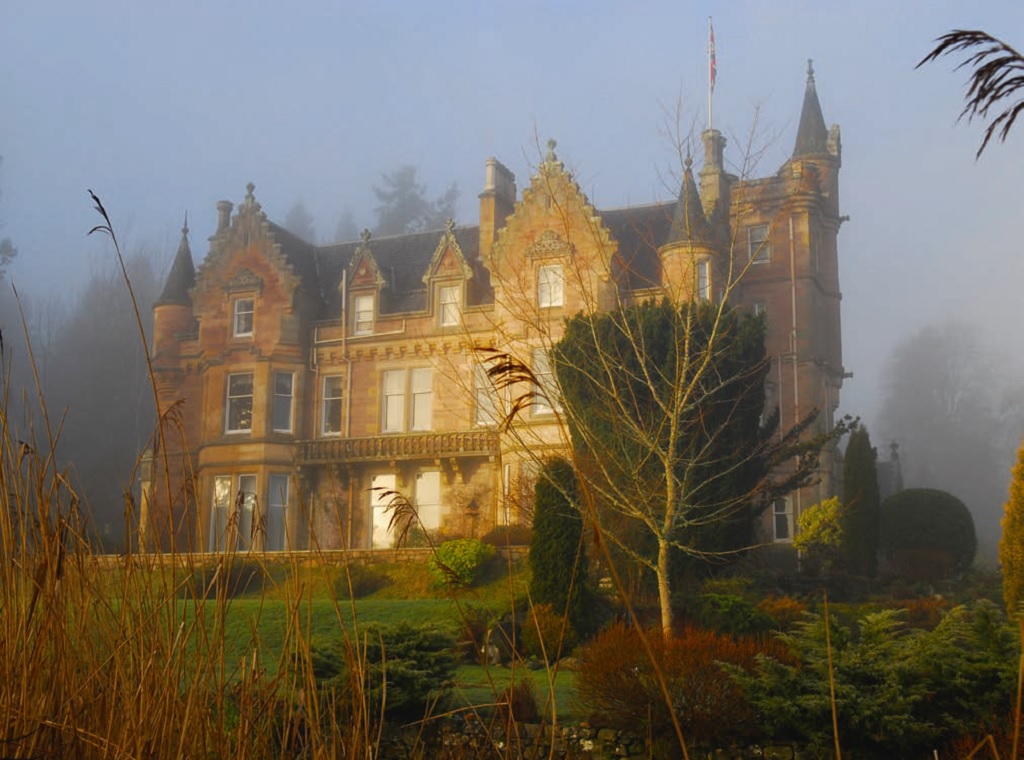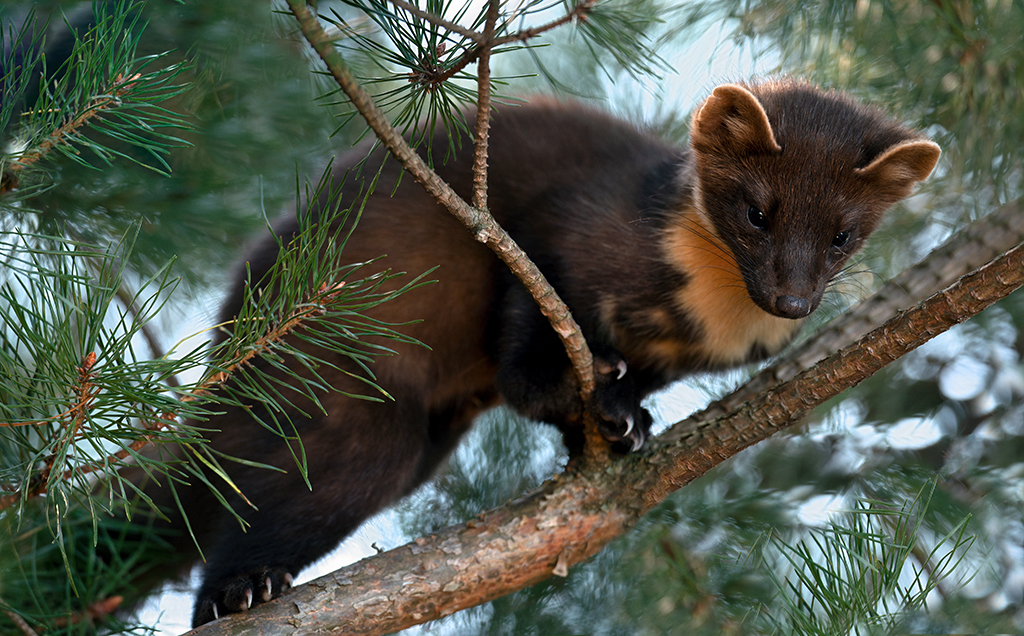Sir John Lister-Kaye has played his part with the slow resurgence of one of Scotland’s natural predators.
Increasingly, I hear complaints about there being too many buzzards or other raptors, or that numbers of badgers or pine martens are too high.
The first pine marten I ever saw was during my childhood when my parents owned the Kilchoan Hotel in Ardnamurchan. One wild evening the door of the public bar blew open and a man came in carrying a large fishing bag.
In it there was a salmon wrapped in newspaper that he gave to mum with a big wink. I heard laughing and joking, and numerous questions about the origins of the freshly-caught silvered beauty. Some things are best left unanswered, besides the truth would have been like elastic.
He had something else in the bag too, also wrapped up in newspaper. He put it on one of the bar tables for everyone to examine. I knew about ferrets as I had been out rabbiting, but this animal, though of similar size, had a luxuriant cocoa-coloured pelt, and yellow-ochre patch beneath its throat. Its eyes were glazed and dull, and its mouth was slightly open, revealing sharp little teeth, its lips curled back in a macabre death smirk.

A pine marten kit
The unfortunate beast had been caught in a snare. I felt sadness because it appeared so perfect, and now it was dead. It was described as a marten cat, a rare creature that was seldom seen in Ardnamurchan at the end of the 1960s. Yet it must have been there previously, and indeed in healthy numbers, for the stunted Atlantic oakwoods that form a sylvan fringe around the peninsula provide the ideal habitat for myriad creatures, particularly the pine marten.
There were comments regarding its soft, dense fur, and I noticed that unlike the dead foxes I had seen in the back of crofters’ vans, and my ferrets, it had no scent. I have never forgotten that first view and have been intrigued by pine martens ever since.
Unlike other mustelids the pine marten’s fur is indeed free of pungent aroma, which unfortunately made it highly sought-after. But it was also killed in vast numbers due to its behaviour.
Nicknamed ‘the scourge of the glens’ during Victorian times, the pine marten was seen as a detestable fiend, a killer of game birds and poultry. Game records from estates all over the Highlands reveal astonishing numbers of ‘marten cats’ in their depressing tallies. These culls were responsible for the loss of species on a gut-wrenching scale.
There were fallacious stories of sheep killing too. Eyewitnesses claimed to have seen pine martens ripping the throats out of ewes, and then wrestling the helpless beasts to the ground to finish them off. I am not sure what these eyewitnesses were imbibing, but their tales seem mythical. Perhaps the illegal stills operating all over the Highlands produced liquor of hallucinogenic potency? Or perhaps witnesses to pine marten terrorist attacks on sheep had consumed magic mushrooms?

Sir John Lister-Kaye
The pine marten is indeed a killer, but not of sheep. Since the Wildlife and Countryside Act of 1981 protected it, it has gradually re-colonised many of its previous strongholds, though sadly it still comes into conflict with game.
As its numbers have steadily risen, I have enjoyed learning about and watching this mercurial mustelid. I also appreciate that it is a Jekyll and Hyde – indeed we have witnessed its devastating behaviour in the henhouse.
A recent atmospheric encounter with two warring pine martens high in crags on the north side of Loch Maree during heavy rain left me high for days. Their loud screams, posturings, and yattering cries as they hurled obscenities at one another in wild chase through wind-honed pines was a drama I will always remember.
At Aigas Field Centre, near Beauly, guests revel in their pine marten sightings and travel from great distances in the hope they will be lucky; they are seldom disappointed. A gentle breeze ripples the waters of the loch as reeds sway and lilies waltz over the darkening surface. There are beavers here, their large lodges silhouetted against the bruised shadows of dusk. A roe doe passes, and a robin ticks harmoniously with a wren.
In a hide in the midst of the adjacent wood, I sit in silence as John Lister-Kaye, a man who has dedicated his life to natural history, environmental policy making and education, puts out peanut butter and other tempting morsels for a host of nocturnal visitors. I want to know, too, what he thinks about the increase and spread of the pine marten. Does he, like me, feel that there are certainly not too many?
For the past 40 years, John, his wife Lucy, and various members of their family, have turned the once-collapsing shooting lodge, the House of Aigas, into the best field centre in the country. Guests flock here to partake in a wealth of courses to learn about and relish the wildlife and unsurpassed scenery of the area, whilst Aigas’ extraordinary ranger training and educational programmes are responsible for the spawning of many skilled naturalists.

The House of Aigas
Over 5,000 school children benefit from Aigas’ unique ‘Naturedays’ annually.
‘In 1976 when I first acquired Aigas we didn’t see pine martens,’ John says. ‘A Forestry Commission keeper at that time killed everything and it was not until around 1982 that things began to change. In 1983 it was exciting to find a den in one of the sheds, and soon I saw wobbly young kits emerging. Then there were increased sightings over the coming years.
‘I had been talking to David Balharry of Tomich who suggested we bait with jam and peanut butter. Pine martens began to appear almost nightly at our hides, together with badgers and foxes.
‘For a while during the 1980s I witnessed an increase in biodiversity, and bird life included numerous curlew, golden plover, snipe and woodcock, as well as redshank, and oystercatcher. By the 1990s, conversely, I began to notice a visible decline. As an ecologist, I believe that things can cope with one or two minor changes, but not more.
‘The waders have all but gone from the fields by the River Beauly, the habitat has altered so much so that there are little or no invertebrates, and our once-thriving rookery is now largely silent; it’s an appalling state of affairs. Pine martens do better simply because theirs is a catholic diet and they adapt far more easily, but the same cannot be said for many other species.’

A pine marten in a tree (Photo: Sergey Uryadnikov)
The wood darkens. A dry twig snaps. A nubile female pine marten bounds onto fallen trees and starts to feed. Her face is fox-like, the ears erect and alert. A spotlight illuminates her magnificent pelt, the strong broad arboreal feet, claws white as if nail varnished, and the unique yellow throat patch stippled with brown. She is perfect. Later a boar badger joins her. The badger clambers up and puts his head into a hollow log stuffed with food, and the pine marten melds into the woodland as silently as she appeared.
In his memoir, The Dun Cow Rib, John exquisitely explores the story of his very natural childhood and the influences that led him to becoming one of Scotland’s finest living naturalists, committed to nature conservation and education. For a man who understands the importance of predator-prey relationships, the need for us to take stock and realise that everything is linked to something else, and the vital importance of habitat restoration, the pine marten is a vital element to that perfect web.
‘It remains a very rare member of our British fauna,’ he says. ‘To recover properly it needs the sanctuary of its Highland stronghold. If we are to restore red squirrels we need pine martens to see off the greys.’
The Dun Cow Rib – A Very Natural Childhood, by John Lister-Kaye, is published by Canongate.
(This feature was originally published in 2017)
TAGS

